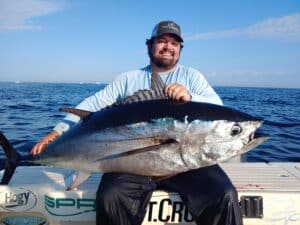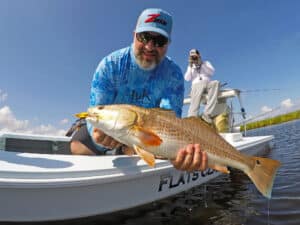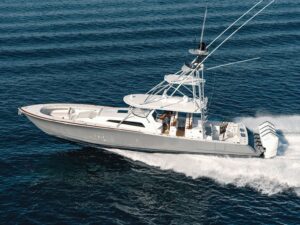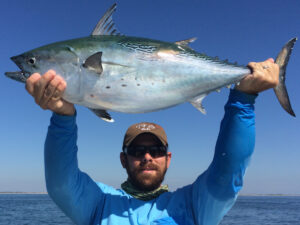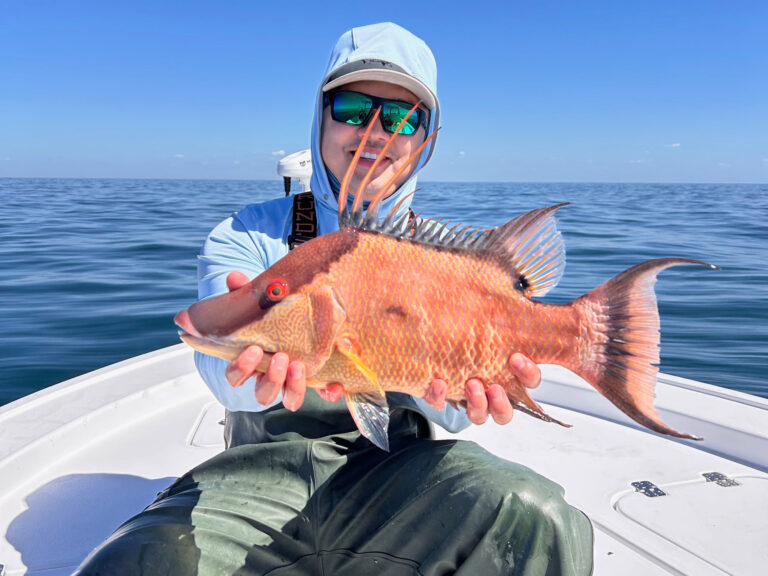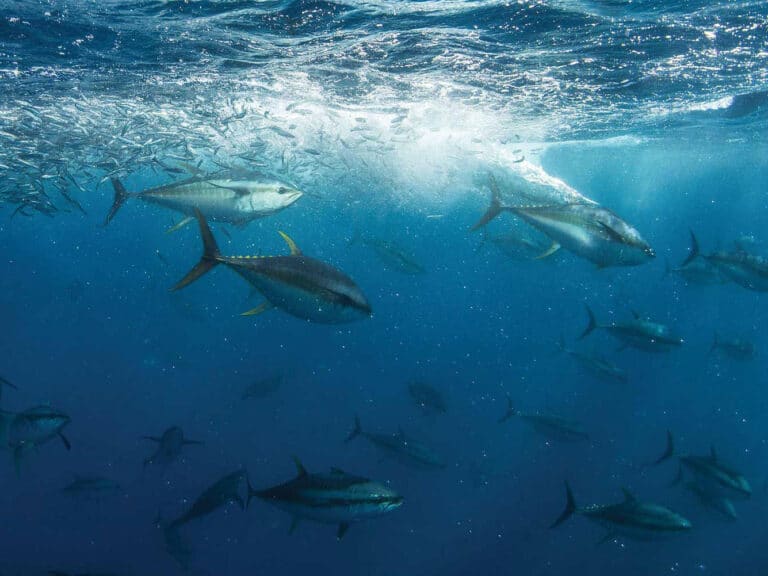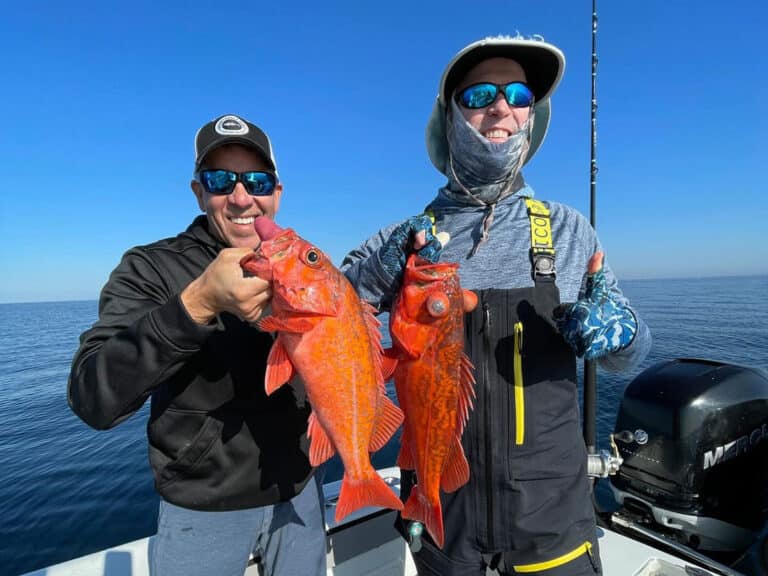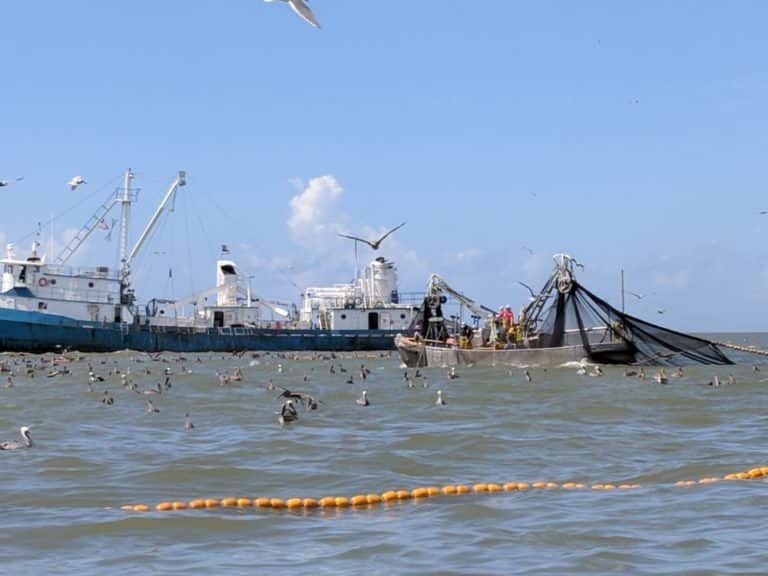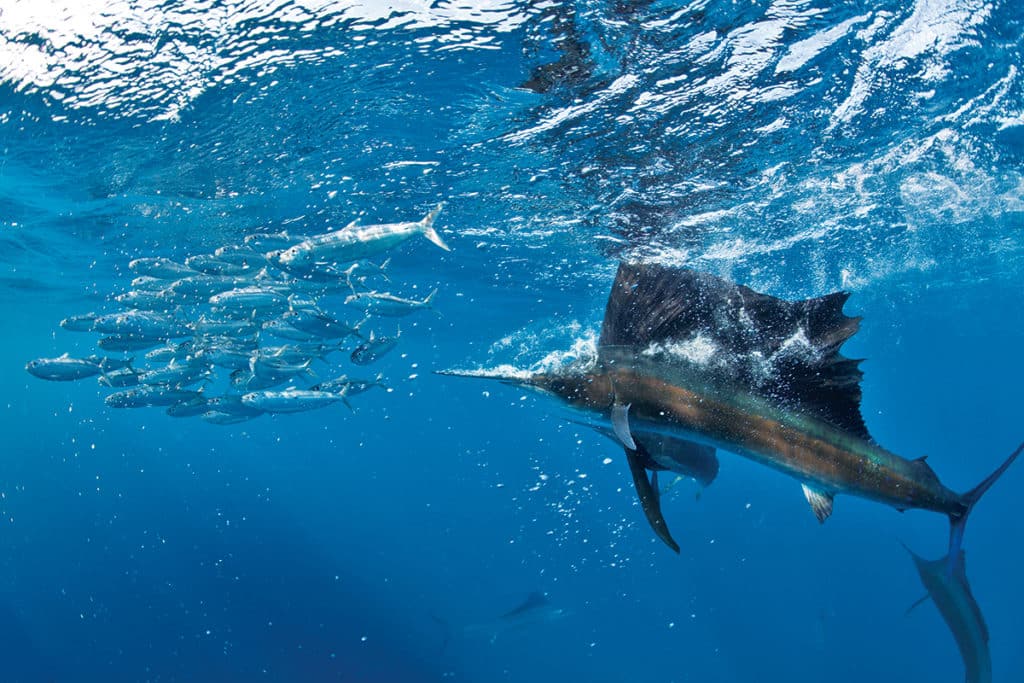
Every angler who plans to target sailfish in the coming year — whether from a private boat or charter — can learn from the pros. This prized sport fish forces anglers in temperate and tropical waters to be on point when sails show in the swells. Too many sailfish tales are filled with cockpit chaos, tackle snafus, damaged egos and missed opportunities.
Those experiences are all part of the addiction, but to help anglers better prepare for future battles, I tapped the knowledge base of 10 sailfish pros in different hot spots across three oceans. Each captain employs different techniques, and each sailfishery is unique, but many of the tips and secrets they offer translate to any region.
In this compilation, I’ve organized the pros geographically from Mexico east to Australia.
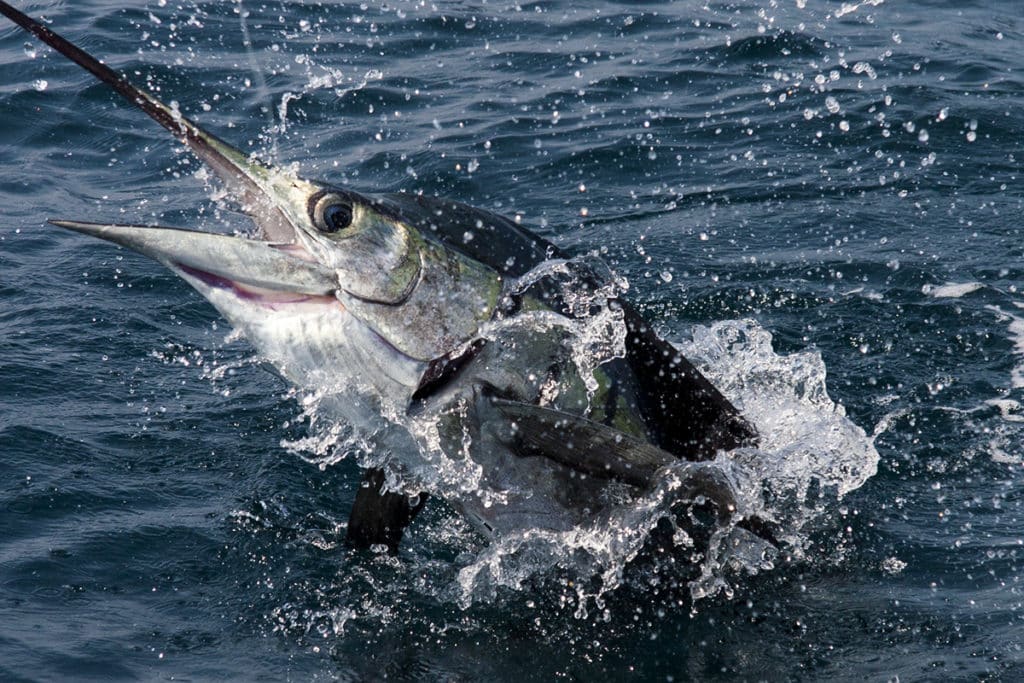
Mexico
Capt. Francisco Muñoz Tenorio, Baja Big Fish Company
Loreto, Baja California Sur
1. Water Temps Matter
Study satellite sea-surface temperatures, focusing on early-morning charts covering the 2 a.m.-to-4 a.m. window. Sails want waters at least 75 degree F. While searching for temperature breaks and currents on the water, Muñoz prefers to troll. He trolls weighted 10- to 12-ounce chrome heads that bubble; popular lure color combos for Pacific sailfish include purple-red, and pink-red-white.
2. Drift and Sight-Fish
At the same time he’s trolling, Muñoz always has at least one rod rigged and ready with a frisky live bait. Then, if he’s trolling and sees sailfish at the surface (especially more than one), he’ll stop the boat and drift for them. While drifting, he uses the live-bait rod to cast ahead of lit-up sailfish.
3. For the Birds
Besides temperature breaks, Muñoz also looks for birds exhibiting specific behavior. The oceanic waterfowl that most often reveal pelagic fish below is the tijereta (frigate bird). Muñoz looks to see if the frigates are cruising, or actually diving and working the water. When he spots diving birds, Muñoz knows they’re likely above fish, possibly sailfish.
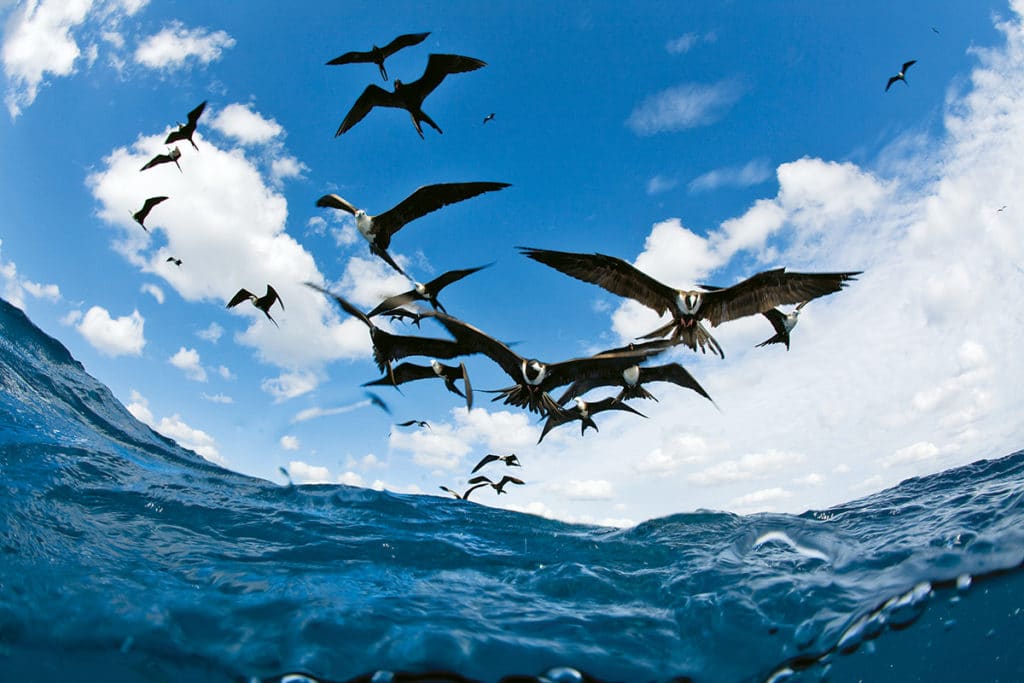
Guatemala
Capt. Brad Philipps, Guatemalan Billfishing Adventures
Marina Pez Vela, Guatemala
4. Don’t Leave Fish to Find Fish
Sailfish often swim with other sails. Philipps sets his lines back in the water as quickly as possible after a hookup. Once a specific area heats up, with anglers getting bit often, he works the area thoroughly. Never leave fish to find fish unless absolutely certain the odds really are better elsewhere, Philipps warns.
5. The Local Network
Philipps is friendly with other captains and fishermen in his area. He’s learned how they entice bites from sailfish and their particular styles of fishing. Most important, he’s routinely in contact with his network of friends and tips them off to hot bites he discovers. Those same captains return the favor with vital on-the-water reports when sailfishing is tough.
6. Reading the Waters
Philipps learns from the fish regularly. Sailfish change their feeding habits from day to day, so he watches for trends. He looks for what they’re biting each trip, and adjusts the spread, speed and drop-back accordingly. Understanding this lets him know if the fish are merely not hungry or whether his mates should adjust their presentation.

Guatemala
Capt. Chris Sheeder, Casa Vieja Lodge
Puerto San Jose, Guatemala
7. Going-Away Bite
Sheeder lets aggressive sailfish pass a fly and swim inside its position. With a hot fish, the angler casts to a spot behind the sailfish. Sheeder then directs the mate to flip the teaser inside the boat. Now the angler strips and pops the fly to create surface commotion, causing the hungry sailfish to circle back and strike aggressively.
8. Keep Your Rod Low
There is no reason to high-stick with a fly rod, says Sheeder. Anglers’ hook-sets should be low, so after a possible miss, the fly is still in position for another bite. During the fight, also, anglers should keep the rod low to utilize the backbone in the lower end. Sheeder points out that lifting higher than horizontal is a waste of energy and can cause lower-back pain for fly anglers.
9. How to Handle Slack Line
At some point, a hooked sailfish is likely to jump toward Sheeder’s boat, Rum Line. He doesn’t want the slack fly line to wrap around the rod tip, so he directs the angler to stick the rod directly into the ocean. The movement and drag of the water prevents tip wraps and break-offs.

Costa Rica
Capt. David Mesen, Sea Fly Sportfishing
Herradura, Puntarenas, Costa Rica
10. Forget the Skirt
The most common bait Mesen uses is a small ballyhoo, rigged naked to a circle hook. That means no skirt or lure in front of the bait. He rigs his ballyhoo with a chin weight to swim rather than skip at the water’s surface. Mesen warns that anglers get only one chance with a delicate ballyhoo; if they miss a strike, all that’s left is the head.
11. Basic Trolling
Mesen targets sailfish with a simple trolling spread. He uses light trolling gear such as Shimano Tyrnos 30s with Tallus 20- to 30-pound rods. He pulls only four baits — one from each outrigger and two flat lines close to the boat. He prefers the swimming ballyhoo on the flat lines and skipping baits off the riggers.
12. Such a Tease
Mesen believes pulling a dredge — sometimes two if tournament fishing — is a vital component to the spread. The teasers attract increased numbers of sails while he trolls. Mesen’s dredges, whether artificial or natural, mimic local bait schools that draw sailfish in numbers. Two electric reels on board handle the dredge duties.

Panama
Albert Battoo, Tropic Star Lodge
Piñas Bay, Panama
13. The Panama Strip
Panama’s Battoo swears by a bonito’s belly as a billfish bait. Better known as a “Panama Strip,” the advantages include its durability when rigged correctly and ability to skip along the surface or swim just below. Battoo’s bonito belly is best rigged with an 8/0 or 9/0 in-line circle hook to 10 to 15 feet of 80- to 130-pound monofilament leader.
14. Don’t Rush the Hookup
Hungry sailfish often take multiple whacks at a bait. Don’t drop the line back too early to feed the fish.
Hungry sailfish often take a couple of bill whacks at Battoo’s baits to stun the prey. He never drops the line back too early to feed the fish before it inhales the bait. Instead, Battoo makes sure the fish turns away from the boat with the bait before engaging, especially with a circle hook.
15 A Patient Release
Sailfish become tired after a prolonged fight, so Battoo spends time at boat-side reviving his fish with the boat in forward motion. Some anglers will attempt to lift a sailfish into the boat, but Battoo halts that action. Dragging a sail over the gunwale removes its protective slime coat and might damage it in other ways, and Battoo takes extra care to release Panama sailfish healthy.

Florida
Capt. Dean Panos, Double D Charters
North Miami, Florida
16. A Numbers Game
Panos keeps as many baits in the water as possible when kite-fishing, especially after hooking and fighting a fish. When Panos kite-fishes, he typically includes three baits on two kites. Once there’s a hookup, other team members concentrate on keeping their baits in the water while the angler is fighting his fish.
17. When to Reposition
After a double or triple hookup, Panos suggests moving the boat down the line and in front the pack of sailfish again. In South Florida, the fish are moving south, so Panos motors south a half-mile and sets back up in the same depths. Panos says this technique has worked numerous times in a single trip to stay with the same pack of fish.
18. Light Leaders
Panos uses light, quality fluorocarbon leader. He chooses Sufix 40-pound on most days, dropping to 30-pound on lighter-wind and clear-water days. He prefers fluorocarbon not strictly for its stealth in the water, he says; 40-pound fluoro is also much stronger than comparable 40-pound monofilament leader.

Florida
Capt. Tim Maddock, Vitamin Sea Too Sailfish Team
Pompano Beach, Florida
19. Prep Makes Perfect
Maddock experiences too much fishing competition in South Florida not to do everything in his team’s power to be ready for sailfish opportunities that present themselves on the water. More often than not, it’s the sailfish team that makes the most of the bites it gets that wins, he says. If Maddock’s team is not averaging 90 to 95 percent hookup rates, his team is not winning the tournament.
20. Meticulous Bait Keeping
Maddock’s boat must have enough bait — and good, quality bait too. When his team handles bait in and out of cages, it’s one at a time. There is nothing worse than a winning fish coming up to a goggle-eye and not giving it a second look, he says. Maddock frequently changes baits; he likes his team to keep things moving, bringing them in and letting them out on the kites.
21. Before the Bite
Most tournaments Maddock fishes have a maximum amount of lines allowed, usually six or seven. His perfect scenario is that every team angler fishes his own rod. If everyone is paying attention to one line, there should never be any surprises, he says. Team anglers should see the fish coming up, or a bait getting nervous, and have ample time to prepare for the strike. Maddock expects to catch every sailfish the team sees.

Tobago
Capt. Gerard “Frothy” de Silva, Hard Play Fishing Charters
Tobago, West Indies
22. Pulling Daisy Chains
In the early season, when the sails are most abundant, de Silva fishes seven lines and two teasers. Paramount to success, his teasers are daisy chains made up of five Iland lures. A hooked ballyhoo is rigged at the rear. The teasers pull 40 to 50 feet behind the boat; de Silva uses a downrigger ball to keep the chains just under the water’s surface.
23. Incorporate Flat Lines
De Silva’s seven-line spread: Place two flat lines just behind the teasers with chin-rigged ballyhoo on circle hooks. Run two 30-pound-class outfits fitted with ballyhoo on small skirts, skipping at the short corners. Finally, place three ballyhoo baits with J-hooks in the two long outrigger and stinger positions.
24. Braid Benefits
De Silva uses braided line on his three longest lines. When free-spooling a sailfish, his braid has less drag in the water. He’s noticed that sailfish tend to drop his baits less frequently with braid compared with thicker, more-water-resistant mono. Hollow-core braid spliced to 60 feet of mono gives him better stretch and hookup percentages than straight braid.

Kenya
Capt. Jackson Safari, Hemingways Watamu
Watamu, Kenya
25. Fin Action
Safari doesn’t believe live bait is his best option when sight-fishing for sailfish. He trolls lures when sails are finning or free-jumping near the boat. In Watamu, he sees heavy concentrations of fish, with lots of opportunities for anglers. Instead of sight-casting, he prefers to troll strip baits or even plastic lures at 7 to 7.5 knots.
26. A Bait Bonanza
When the sails don’t show at the surface, but there are loads of bait around, Safari switches to live-baiting. Normally he catches small frigate mackerel on squid jigs for bait. He rigs the baits to circle hooks and trolls at speeds between 2 and 3 knots. This tactic raises fish successfully when they’re not easy to spot, he says.
27. Bait-and-Switch
Watamu’s skippers will troll hookless teasers up to 70 feet behind the boat to attract sailfish to the boat. When a sail starts chasing the teasers, Safari pulls like mad and lures the fish close. He points out that an angler doesn’t have to be a fly-fisherman for a successful bait-and-switch; he can cast a rigged dead bait in front of the fish as the teaser is pulled away.

Australia
Capt. Chris Nisbet, Broome Billfish Charters
Broome, Western Australia
28. Listen to the Skipper
On Billistic, Nisbet adopted a short teaser pattern so close to the boat that anglers often don’t see the sailfish at their feet. As a rule, the guy up top at the helm sees all, he says. Anglers who listen to his directions in preparation for a hookup have higher catch ratios than fishermen who don’t pay attention.
29. Position Baits Close
Nisbet has an annoying toothy (shark) problem in Broome. After lots of different approaches, he found that winding the lines up to the start of a double section of a standard 20-pound IGFA leader solved his problem and brought sails closer to the boat. Sailfish are not scared away from baits by the proximity of the boat.
30. Use a Spinning Reel
Nisbet’s use of spinning reels has decided advantages and disadvantages. First, it allows anglers to cast to fish or drop back with accuracy. Anglers can place their index finger on the spool with the bail arm open, and extend the outfit to reach most teasers, he says. One disadvantage of spinning gear is the line twist, and Nisbet makes sure to have two outfits ready per angler so a deckhand can straighten lines behind the boat after a hot bite.

